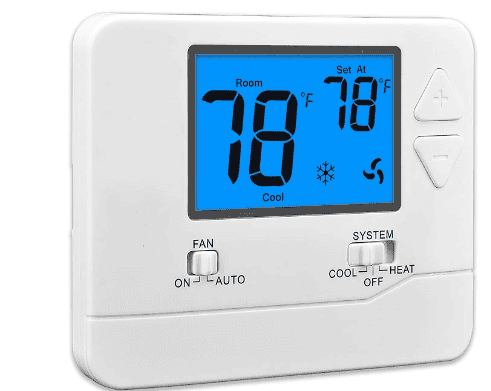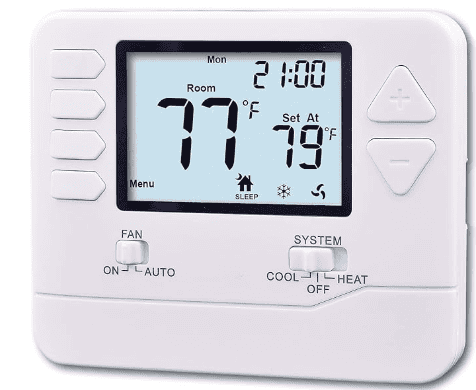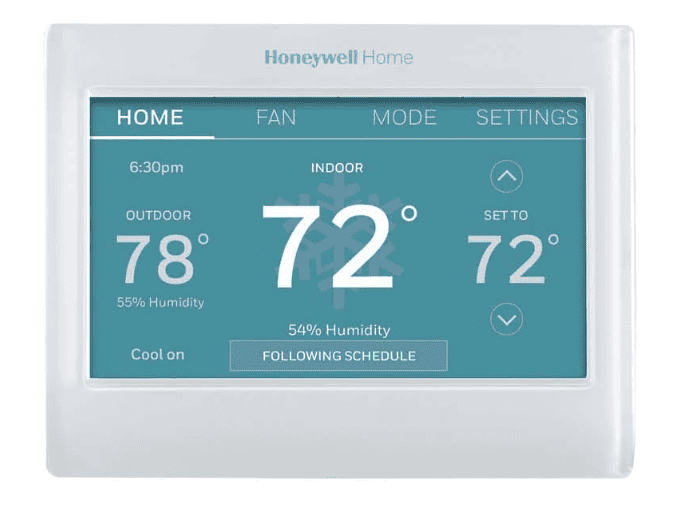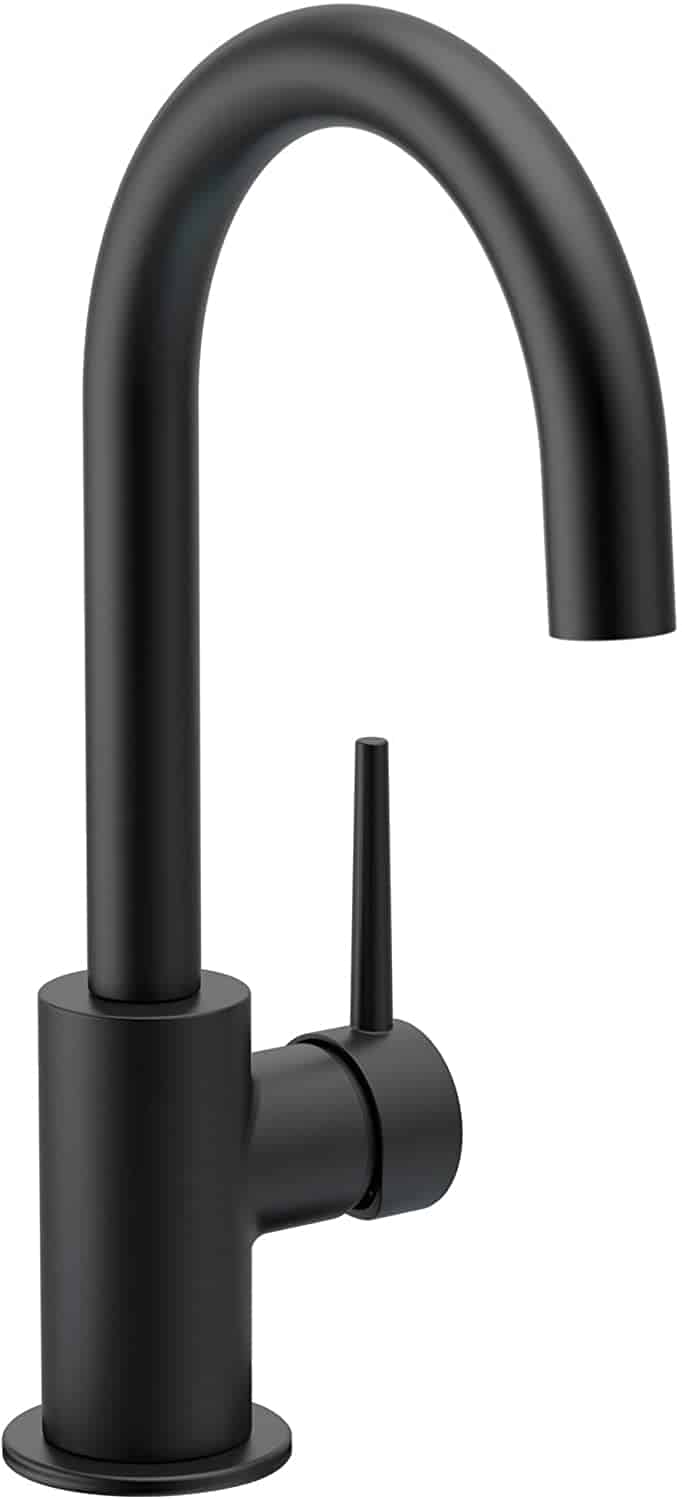Types of Thermostats for Home
Hi, home renovation heroes! Here we are with the latest on home improvement. Today’s focus is on thermostats. We’re going to go over three types of thermostats to help you choose the best one for your home.
Imagine this scenario, you’re at home with your family but can’t seem to get comfortable because it’s either too hot or too cold. that sound familiar?
We had similar experiences in our household. We have messed around with the thermostat so much that our air conditioning system once froze, creating a very uncomfortable situation!
The market offers several types of thermostats, each having its own unique features and benefits including simple manual ones, handy programmable models and advanced smart versions that seem to know what you want before you do!

Related:
Maximizing Profits for Renovating a Rental Property
Home Remodeling Mistakes Couples Should Avoid
Summary Box
- Thermostat Types: A Quick Overview
- Manual thermostats: Simple, affordable, but less precise
- Programmable thermostats: Set schedules for convenience and energy savings
- Smart thermostats: Advanced features, remote control, energy efficiency
- Choosing the Right Thermostat
- Consider factors like HVAC system compatibility, home size, budget, and lifestyle
Consult an HVAC professional for personalized recommendations - Benefits of Upgrading Your Thermostat
- Improved comfort and consistent temperatures throughout your home
- Potential energy savings and lower utility bills
- Enhanced control over your home’s heating and cooling systems
- Key Takeaways
- Different thermostat types offer unique features and benefits
- Selecting the best thermostat depends on your specific needs and preferences
- Upgrading your thermostat can lead to a more comfortable and energy-efficient home
What Types of Thermostats Help?
Choosing the right thermostat is crucial to maintain a comfortable atmosphere in your house while saving on energy costs. We all aim to achieve this with our homes, don’t we.

Now, let’s discuss thermostats and their pros and cons to assist you in identifying the one that best fits your household needs.
the end of this article you will possess ample knowledge about thermostats, thoroughly equipped to manage your home heating and cooling requirements. Let’s start!
Thermostats 101: Why They Matter in Your Home
Thermostats have a significant effect on your home’s heating and cooling systems due to their compact design. HVAC Thermostats have a critical role in providing comfort by guaranteeing that the heating, ventilation, and air conditioning (HVAC) system operates effectively.

A thermostat acts as a control point for the furnace, heat pump or air conditioner. This determines when and how much the heat pum and air conditioner operate.
Properly managing it can not only enhance comfortability but also cut down energy consumption hence lowering utility bills.
Modern thermostats have additional benefits apart from just regulating temperature. They contribute toward energy conservation and improved air quality within your house.
Programmable thermostats allow setting up customized routines akin to your daily schedule while advanced ones offer remote access, learning capacities, and compatibility with other smart devices at home.
Understanding the Types of Thermostats for Your Home
Taking into account the strong effect of thermostats on factors such as comfort level of your house, energy consumption, as well as functioning of overall HVAC system, it becomes vital to understand the variety of options available for catering personal needs specifically.

Aiming for clarity regarding different types of thermostats enables selecting an informed choice for personal benefit.
- Comparing line voltage thermostats against low voltage thermostats
- Benefits of programmable thermostats
- Advanced attributes of smart thermostats
- Selecting an appropriate thermostat that fits both your HVAC system as well as lifestyle
By the end of this post, you should have a clearer understanding about different kinds of thermostat available which would guide you towards making an informed choice for either improving or switching out your current home thermostat
The Role of These Types of Thermostats in Maintaining a Comfortable Home
Who would have guessed that such a device could influence your home’s climate significantly? A thermostat is similar to the orchestra director of your residence, controlling your heating and cooling systems accurately.

Thermostats work hard behind the scenes, preventing your heater from turning your lounge into a hot tub and stopping your air conditioner from converting your bedroom into a freezer.
By continuously tracking and altering the temperature, thermostats enable your HVAC system to operate smoothly.
This helps you steer clear of extremely high energy bills. Also, hold immense importance in maintaining air quality as they manage humidity levels and ensure appropriate air circulation.
Cornily put, next time you relish a comfortable indoor environment, appreciate your thermostat. it’s putting great efforts to maintain the suitable temperature for you just like Goldilocks’ favorite porridge!
How Types of Thermostats Impact Your Energy Bills
Buckle up, folks – we’re about to dive into the thrilling world of energy bills! (Said no one ever, right?) But hear us out, because your thermostat plays a starring role in this financial drama.

Think of your thermostat as the gatekeeper to your wallet. Every degree you adjust can make your HVAC system work harder or take a well-deserved break.
A poorly managed thermostat can turn your energy bill into a horror story, with numbers scarier than a Stephen King novel.
On the flip side, a well-programmed thermostat can be your budget’s best friend, helping your heating and cooling systems run more efficiently. It’s like having a tiny, wall-mounted financial advisor that never asks for a commission!
So, whether you’re rocking a manual, programmable, or smart thermostat, remember: a few mindful adjustments could mean the difference between your energy bill making you sweat or allowing you to chill out – literally and figuratively!
Quick Overview of the Three Main Types of Thermostats
Alright, thermostat enthusiasts (we know you’re out there!), let’s break down the big three in the world of temperature control. First up, we’ve got the manual thermostat – the OG of the bunch. It’s like the flip phone of the HVAC world: simple, reliable, and gets the job done without any fancy bells and whistles.

Next, we have the programmable thermostat, the middle child of the family. It’s got some cool tricks up its sleeve, like setting schedules for your heating and cooling systems, but it still needs you to tell it what to do.
Last but not least, we’ve got the smart thermostat – the whiz kid of the group. This tech-savvy device can learn your habits, adjust to your schedule, and even chat with other smart home gadgets.
It’s like having a tiny AI assistant dedicated solely to your comfort (and hopefully not planning world domination). Whether you’re team manual, programmable, or smart, each type has its own unique way of keeping your home’s temperature just right and your energy bills in check. So, which thermostat personality matches yours?
Manual Thermostats: The Old-School Classic
When it comes to controlling your home’s temperature, manual thermostats are the tried-and-true option that has been around for decades. These simple, low-voltage devices allow you to adjust the temperature of your heating or cooling system with the turn of a dial or the slide of a lever.

While manual thermostats may lack the advanced features of their programmable and smart counterparts, they still have a place in many homes. They are an affordable, straightforward solution for those who prefer a no-frills approach to temperature control.
Key Points for Manual Types of Thermostats
- Simplicity: Easy to use and understand, even for those who aren’t tech-savvy
- Affordability: Generally the most budget-friendly option among thermostat types
- Compatibility: Work with most HVAC systems, including furnaces, air conditioners, and heat pumps
- Limitations: Require manual adjustment, lack energy-saving features, and may not provide precise temperature control. Despite their limitations, manual thermostats can still effectively regulate your home’s temperature and keep you comfortable.
They are a reliable choice for those who don’t mind making occasional adjustments to their thermostat settings throughout the day.
If you’re considering a manual thermostat for your home, be sure to:
- Choose a model that is compatible with your HVAC system’s voltage requirements (e.g., low voltage or line voltage)
- Consider the location of your thermostat for optimal temperature readings and easy access.
- Familiarize yourself with proper installation techniques or hire a professional to ensure your thermostat is set up correctly.
While manual thermostats may not be the most advanced option on the market, they remain a dependable and straightforward choice for many homeowners seeking a basic temperature control solution.
Programmable Thermostats: Set It and Forget It
If you’re looking for a thermostat that offers both convenience and energy savings, a programmable thermostat might be just what you need.

These thermostats allow you to set custom temperature schedules based on your daily routines, ensuring that your home is always comfortable when you need it to be, while also reducing energy waste when you’re away or asleep.
Programmable thermostats work by automatically adjusting the temperature of your heating or cooling system according to the schedule you’ve set.
This means you can program your thermostat to maintain a comfortable temperature when you’re home, and then automatically switch to an energy-saving mode when you’re at work or sleeping.
key benefits of programmable thermostats:
- Energy Efficiency: By optimizing your temperature settings based on your schedule, you can reduce energy waste and lower your utility bills
- Customization: Set multiple temperature schedules to accommodate your daily routines and preferences
- Compatibility: Work with most low voltage HVAC systems, including furnaces, air conditioners, and heat pumps
- Set-and-Forget Convenience: Once programmed, your thermostat will automatically adjust the temperature, eliminating the need for constant manual adjustments
When choosing a programmable thermostat, consider the following:
- Look for a model that offers the level of customization you need, such as 7-day, 5+2-day, or 5-1-1-day programming options.
- Ensure that the thermostat is compatible with your HVAC system’s voltage requirements and type (e.g., heating, cooling, or heat pump)
- Choose a thermostat with an easy-to-read display and user-friendly interface for simple programming and adjustments
- Consider additional features like vacation mode, override settings, and energy usage reports
While programmable thermostats may require an initial time investment to set up your desired schedule, the long-term energy savings and convenience they offer make them a worthwhile choice for many homeowners looking to upgrade their temperature control system.
Smart Thermostats: The High-Tech Powerhouses
If you’re ready to take your home’s temperature control to the next level, a smart thermostat might be the perfect solution. These high-tech devices offer a range of advanced features that not only enhance your comfort but also help you save energy and money in the long run.

Smart thermostats are designed to learn your preferences and automatically adjust your home’s temperature based on your habits and schedule.
They can be controlled remotely using your smartphone, tablet, or voice assistant, giving you the ultimate convenience and flexibility when it comes to managing your home’s climate.
Key Features and Benefits of Smart Thermostats
- Learning Capabilities: Many smart thermostats use artificial intelligence to learn your temperature preferences and automatically create a custom schedule based on your habits
- Remote Access: Control your thermostat from anywhere using your smartphone or tablet, allowing you to adjust settings, monitor usage, and receive alerts
- Energy Savings: By optimizing your temperature settings and providing energy usage reports, smart thermostats can help you reduce waste and lower your utility bills
- Integration with Smart Home Devices: Many smart thermostats can integrate with other smart home devices, such as smart locks, lights, and speakers, for a more connected and convenient home experience
- Geofencing: Some smart thermostats can use your phone’s location to detect when you’re away from home and automatically adjust the temperature to save energy
When considering a smart thermostat for your home, keep the following in mind
- Ensure that the thermostat is compatible with your HVAC system, including your heating, cooling, or heat pump setup
- Look for a model with a user-friendly app and intuitive interface for easy setup, programming, and control
- Consider the level of smart home integration you need, such as compatibility with popular voice assistants like Amazon Alexa or Google Assistant
- Choose a thermostat with a sleek, modern design that complements your home’s aesthetics
While smart thermostats may come with a higher upfront cost compared to manual or programmable models, their advanced features, energy savings potential, and convenience make them a worthwhile investment for tech-savvy homeowners looking to optimize their home’s comfort and efficiency.
Choosing the Perfect Thermostat for Your Home
With so many thermostat options available, it can be overwhelming to decide which one is the best fit for your home and family. Whether you’re looking to replace an old manual thermostat or upgrade to a high-tech smart model, there are several key factors to consider when making your selection.

Before you start shopping for a new thermostat, it’s essential to assess your home’s unique needs and preferences. This includes evaluating your HVAC system, considering your budget, and determining the level of convenience and features you desire.
Consider the Following Factors in Reviewing Types of Thermostats for Your Home
To help you navigate the process of choosing the perfect thermostat for your home, consider the following factors:
- HVAC System Compatibility: Ensure that the thermostat you choose is compatible with your home’s heating and cooling system, whether it’s a furnace, air conditioner, heat pump, or a combination of these
- Voltage Requirements: Determine whether your HVAC system requires a low voltage or line voltage thermostat, as this will impact the types of thermostats that will work with your system
- Home Size and Layout: Consider the size and layout of your home, as this may influence the type of thermostat you need, such as a single-zone or multi-zone model
- Energy Efficiency Goals: If reducing energy waste and lowering utility bills is a priority, look for a thermostat with energy-saving features like programmable schedules, smart learning capabilities, and energy usage reports
- Ease of Use: Choose a thermostat with an intuitive interface and user-friendly controls, especially if you have family members who may not be tech-savvy
- Installation and Maintenance: Consider the complexity of the installation process and whether you feel comfortable installing the thermostat yourself or if you’ll need to hire a professional
By taking the time to assess your specific needs and preferences, you’ll be better equipped to choose a thermostat that seamlessly integrates with your home’s HVAC system, provides the features and convenience you desire, and helps you maintain a comfortable and energy-efficient living space.
Thermostat Installation: A Step-by-Step Guide
Once you’ve chosen the perfect thermostat for your home, the next step is to install it properly. While some homeowners may feel comfortable tackling this project themselves, others may prefer to hire a professional HVAC technician to ensure the job is done correctly.

If you’re considering installing your new thermostat yourself, it’s crucial to follow the manufacturer’s instructions carefully and take all necessary safety precautions.
This guide will walk you through the general steps involved in installing a thermostat, but keep in mind that the specific process may vary depending on the type of thermostat and your home’s HVAC system.
Tools and Materials Need for Installing HVAC Thermostats
- Your new thermostat and any included accessories
- A screwdriver (typically a Phillips head)
- A drill (if mounting the thermostat in a new location)
- Wire stripper and wire nuts
- Level
- Pencil and tape
Follow These Steps to Install Thermostats
- Safety First: Always turn off the power to your HVAC system at the circuit breaker before beginning any work to avoid the risk of electric shock
- Remove the Old Thermostat: Carefully remove the old thermostat from the wall, taking note of the wiring configuration and labeling the wires if necessary
- Install the New Thermostat Base: Position the new thermostat base on the wall, ensuring it’s level, and mark the mounting holes with a pencil
- Drill Mounting Holes (if necessary): If your new thermostat requires different mounting holes than your old one, drill new holes as needed
- Connect the Wiring: Following the manufacturer’s wiring diagram, connect the thermostat wires to the appropriate terminals on the new thermostat base
- Secure the Thermostat: Carefully attach the new thermostat to the mounted base, making sure not to pinch or damage any wires in the process
- Restore Power and Test: Turn the power back on to your HVAC system and test your new thermostat to ensure it’s working properly
If at any point during the installation process, you feel unsure or encounter unexpected issues, don’t hesitate to contact a professional HVAC technician for assistance.
Improper thermostat installation can lead to inaccurate temperature readings, reduced energy efficiency, and potential damage to your HVAC system, so it’s always better to err on the side of caution.
“There is nothing like staying at home for real comfort”
Jane Austen
Wrapping Up: Types of Thermostats Cheat Sheet
Congratulations! You’ve made it through our in-depth exploration of the different thermostat types available for your home. By now, you should have a clearer understanding of the key features, benefits, and considerations associated with manual, programmable, and smart thermostats.
To help you keep all this information straight, we’ve put together a handy cheat sheet that summarizes the main points we’ve covered throughout this post. Use this quick reference guide to refresh your memory and make an informed decision when selecting the best thermostat for your home’s heating and cooling needs.
Factors in Choosing the Right Types of Thermostat for Your Home
- Compatibility with your HVAC system (furnace, air conditioner, heat pump, etc.)
- Voltage requirements (low voltage vs. line voltage)
- Desired level of convenience and automation
- Energy efficiency goals and potential savings
- Ease of use and installation
- Budget and long-term value
Whether you opt for a tried-and-true manual thermostat, a convenient programmable model, or a cutting-edge smart thermostat with all the bells and whistles, the most important thing is to choose a device that meets your specific needs and helps you maintain a comfortable, energy-efficient home.
Thermostat Type Cheat Sheet
- Manual Thermostats: Simple, affordable, and compatible with most HVAC systems, but require manual temperature adjustments
- Programmable Thermostats: Offer custom temperature schedules for convenience and energy savings, with various programming options available
- Smart Thermostats: Provide advanced features like learning capabilities, remote access, energy reports, and smart home integration, with higher upfront costs but potential long-term savings
Final Thoughts on Types of Thermostats
Armed with this knowledge, you’re now ready to make a confident decision and take control of your home’s comfort like a true HVAC pro. Happy thermostat hunting!
“Home is the nicest word there is.”
— Laura Ingalls Wilderitle
FAQs
Which thermostat is best for saving money on energy bills? (Keywords: energy-saving thermostat, thermostat savings)
A: Programmable and smart thermostats are great for saving money. They let you set schedules or learn your habits to adjust temps when you’re away or asleep. This can cut your energy use without sacrificing comfort when you’re home and active.
Can I install a new thermostat myself, or do I need a pro? (Keywords: DIY thermostat installation, thermostat replacement)
A: Many people can install basic thermostats themselves if they’re comfortable with simple wiring. But for smart thermostats or complex systems, it’s best to hire a pro. They’ll ensure it’s done safely and works properly with your HVAC system.
What’s the difference between a programmable and a smart thermostat? (Keywords: programmable vs smart thermostat, thermostat comparison)
A: Programmable thermostats let you set temperature schedules, while smart thermostats can learn your habits, adjust automatically, and be controlled remotely via your phone. Smart thermostats offer more features but are usually pricier.
How often should I replace my thermostat? (Keywords: thermostat lifespan, when to replace thermostat)
A: Most thermostats last 10-15 years. Consider replacing yours if it’s not keeping temps steady, your energy bills are rising, or you want new features. Upgrading to a programmable or smart thermostat can improve comfort and efficiency.
Can changing my thermostat really make a big difference in my home? (Keywords: thermostat benefits, thermostat energy efficiency)
A: Absolutely! A good thermostat can boost comfort, cut energy waste, and lower bills. Smart thermostats can even learn your preferences and adjust to your schedule. Small changes in how you use your thermostat can lead to big improvements in your home.







